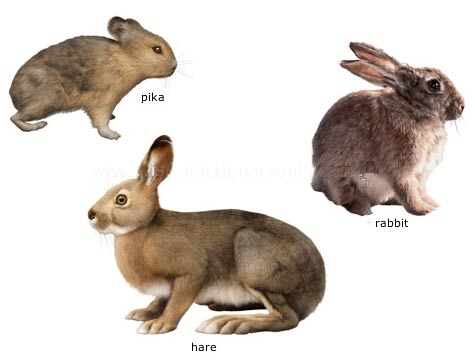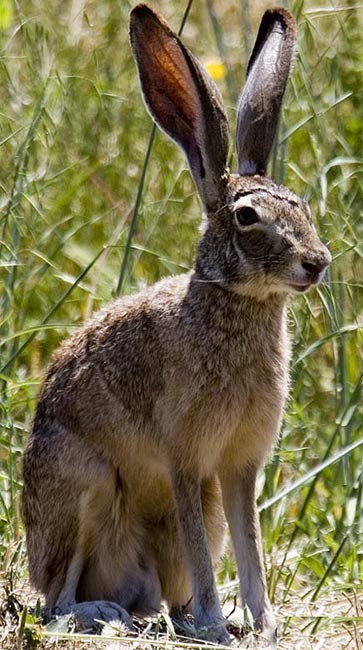Rabbits, Hares and Pika – Food for the World

The gentle rabbits and hares are herbivores that can reproduce rapidly and are the favorite prey of a whole slew of predatory mammals (feline, canine and weasels) and even predatory birds. Thus, their numbers can be seen as a measurement of the health of the ecosystem and the animal food chain will change drastically as their numbers do.

Little rabbit
The lagomorph family has incisor teeth that are long and grow throughout their lives. These teeth are extremely effective for severing plant stems and for gnawing on bark. Their cheek teeth, located further back in the jaw, also grow continuously as they wear away as the animals grind up all the vegetation they consume.

Large black-tailed jackrabbit
The largest hares can be 28 in (71 cm), 10 lbs (4.5 kg). Hares use their larger legs to run from predators while smaller rabbits prefer to seek underground hideouts to avoid predators.
Many rabbits and hares have brown to reddish brown coats with white underneath. All white coats are utilized by some in snowy regions and vary by season. Hares can change their colors with the seasons while rabbits stick to the same color year-round.
Closely related to rabbits and hares is the pika. However, the pika doesn’t have the same furry tail (they have no tail), long ears and long legs. It does store its food which rabbits and hares aren’t known to do. They vocalize more, sometimes chattering, while rabbits and hares only screech occasionally when they are in danger.
